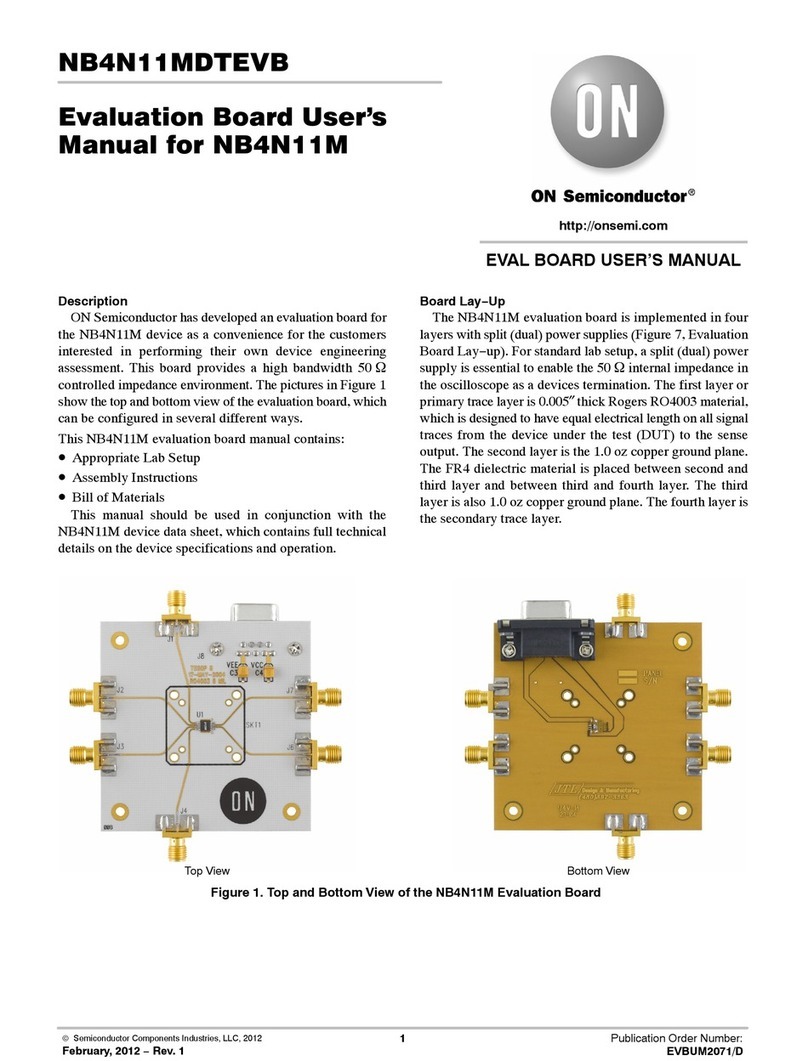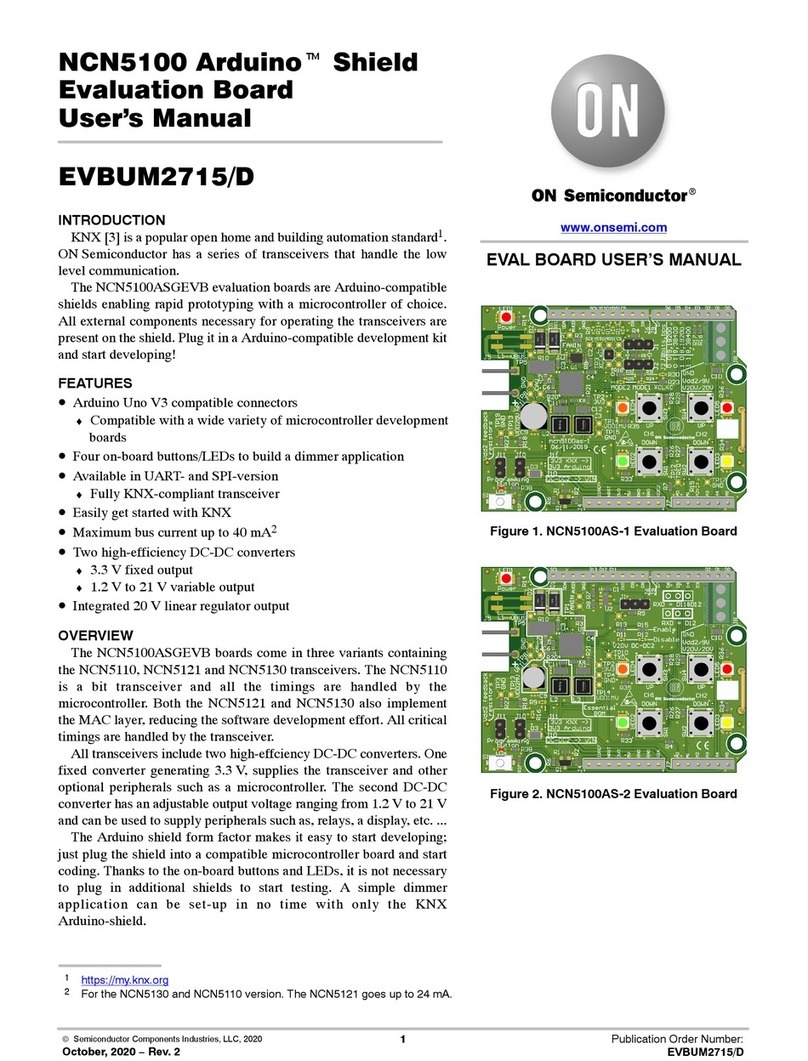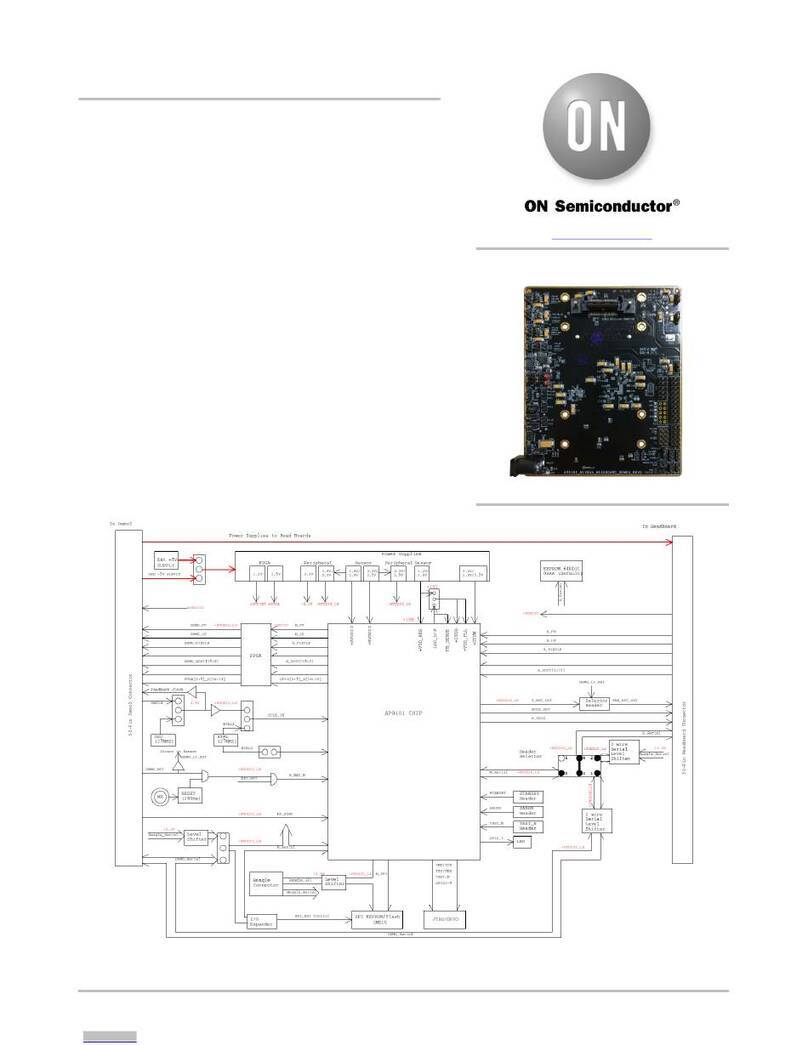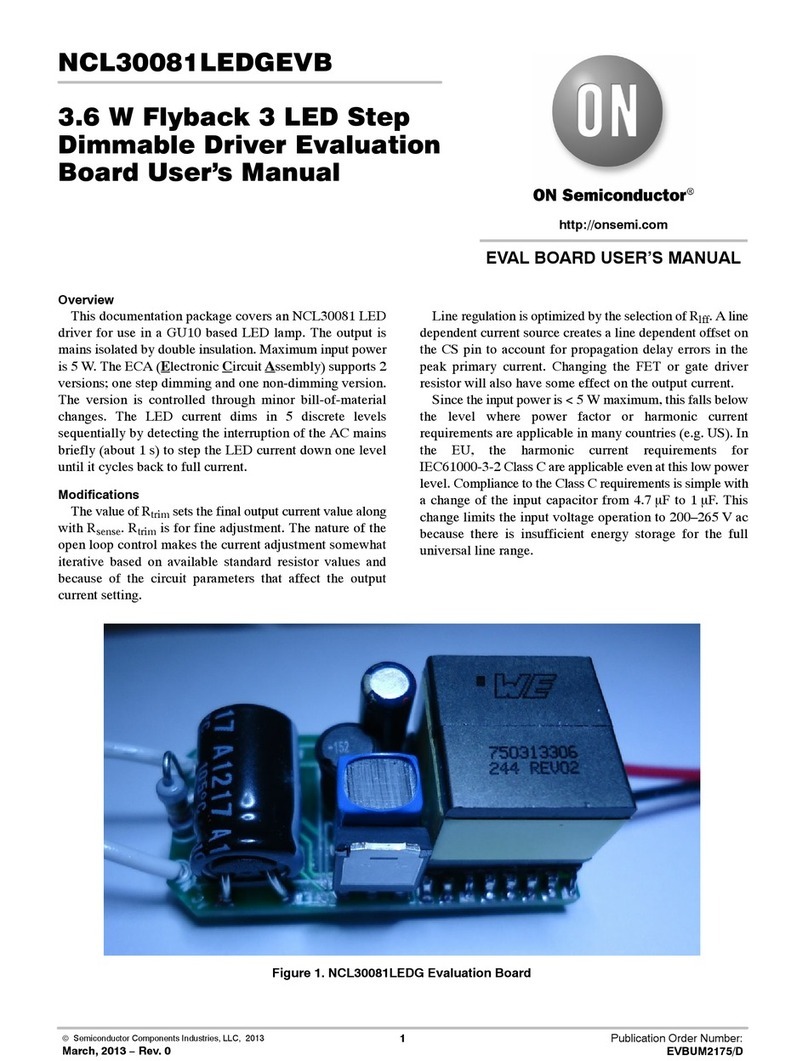
NCP1219PRINTGEVB
http://onsemi.com
4
Primary Switch
The main MOSFET switch, Q5, is selected to operate at
a junction temperature of 120°C at an ambient temperature
of 85°C. The maximum power dissipation for Q5 is
calculated using Equation 9, where TMAX is the maximum
junction temperature, TAis the ambient temperature, and
RqJA is the thermal resistance of the MOSFET.
Pmax +ǒTmax *TAǓ
RqJA
(eq. 9)
An isolated TO−220 with an RqJA of 80°C/W results in a
maximum power dissipation of 438 mW. The RDS(on)
required to satisfy the maximum power dissipation at
nominal load is approximated by Equation 10. The value is
taken from the datasheet curves for the desired junction
temperature, provided by the MOSFET manufacturer.
RDS(on) +Pmax
IL(RMS) 2(eq. 10)
The MOSFET is sized so that the thermal requirements
are met under nominal load (30 W). Equation 3 is used to
determine the peak current, in this case using 30 W for Pout,
yielding a peak current of 1.7 A.
The controller operates in DCM at low−line and nominal
load. The equation for the primary rms current in DCM is
shown in Equation 11. In this example, the primary rms
current is calculated to be 0.69 A.
IL(RMS) +Ipeak @Dmax
3
Ǹ(eq. 11)
Substituting the resulting primary rms current into
Equation 10, we find an RDS(on) of less than 1.1 Wis
required. The Infineon SPA07N65C3 n−channel MOSFET,
with RDS(on) = 600 mWis used in this design. This is a
conservative approach to the selection of Q5. The RqJA used
to calculate the maximum power dissipation assumes the
MOSFET operates in free air, without a heat sink. This
design includes an aluminum heat sink attached to the body
of the TO−220, reducing the thermal resistance and
increasing the maximum power capability of the MOSFET.
Secondary Rectifier
The peak inverse voltage, PIV, of D12 is calculated by
Equation 12.
PIV +Vbulk(max) @N)Vout (eq. 12)
375 V @0.303 )24 V +138 V
Applying a silicon derating factor of 0.8 to PIV, the
minimum breakdown voltage of D12 must be greater than
173 V. An MUR420, 200 V ultrafast rectifier is selected.
The power dissipated in the secondary diode, Pdis
approximated by Equation 13, where Vfis the forward
voltage of the selected diode, and Iout is the nominal output
current of the converter.
Pd+Vf@Iout (eq. 13)
Output Capacitor
The output capacitor is selected to satisfy the output
voltage ripple requirements of the controller. The output
capacitor must supply the entire output current during the
controller on time. The capacitor value is calculated using
Equation 14,
Cout +
Iout @ton(max)
Vripple
(eq. 14)
where ton(max) is the maximum on time of the controller,
which can be calculated using Dmax from Equation 5. For
this design, Equation 14 results in a capacitor value of 70 mF.
The effective series resistance, ESR, of the capacitor also
plays a significant role in the selection of the output
capacitor. The secondary peak current charges the output
capacitor during each cycle, and the ESR must not cause a
voltage drop greater than the ripple voltage. The acceptable
ESR is calculated using Equation 15,
ESR v
Vripple
Isec(peak)
(eq. 15)
where Isec(peak) is proportional to the primary peak current
by the turns ratio, as given by Equation 16.
Isec(peak) +
Ipri(peak)
N
(eq. 16)
An ESR of 31 mWis required to meet the 200 mV output
ripple requirement.
The output capacitor also has a specified rms current
capability that must be considered. The rms current seen by
the capacitor, ICout(RMS), is calculated using Equation 17,
ICout(RMS) +Isec(RMS) 2*Iout(avg) 2
Ǹ(eq. 17)
where Iout(avg) is the maximum dc load current supplied by
the converter and Isec(RMS) is the secondary rms current. For
the maximum load current, the controller operated in CCM
and Isec(RMS) is calculated using Equation 18.
For this design at maximum load, ICout(RMS) is 2.44 A. An
output capacitor with an ESR of 18 mWand an rms ripple
current capability of 2.77 A is selected, and the resulting
capacitor value is 1000 mF.
Isec(RMS) +(1*Dmax)@ǒIsec(peak) 2*Isec(peak) @
DIL
N)
DIL2
N2@3Ǔ
Ǹ(eq. 18)































